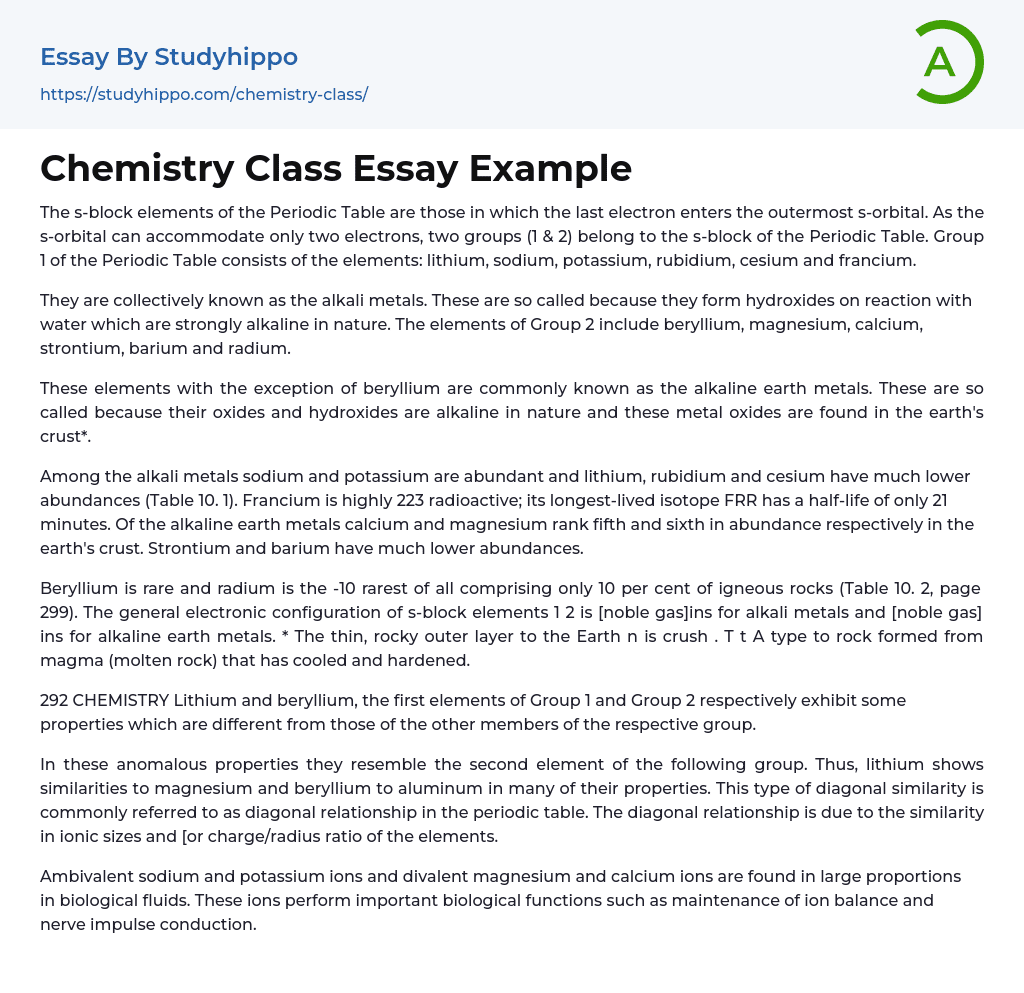The s-block elements of the Periodic Table are those in which the last electron enters the outermost s-orbital. As the s-orbital can accommodate only two electrons, two groups (1 & 2) belong to the s-block of the Periodic Table. Group 1 of the Periodic Table consists of the elements: lithium, sodium, potassium, rubidium, cesium and francium.
They are collectively known as the alkali metals. These are so called because they form hydroxides on reaction with water which are strongly alkaline in nature. The elements of Group 2 include beryllium, magnesium, calcium, strontium, barium and radium.
These elements with the exception of beryllium are commonly known as the alkaline earth metals. These are so called because their oxides and hydroxides are alkaline in nature and these metal oxides are found in the earth's
...crust*.
Among the alkali metals sodium and potassium are abundant and lithium, rubidium and cesium have much lower abundances (Table 10. 1). Francium is highly 223 radioactive; its longest-lived isotope FRR has a half-life of only 21 minutes. Of the alkaline earth metals calcium and magnesium rank fifth and sixth in abundance respectively in the earth's crust. Strontium and barium have much lower abundances.
Beryllium is rare and radium is the -10 rarest of all comprising only 10 per cent of igneous rocks (Table 10. 2, page 299). The general electronic configuration of s-block elements 1 2 is [noble gas]ins for alkali metals and [noble gas] ins for alkaline earth metals. * The thin, rocky outer layer to the Earth n is crush . T t A type to rock formed from magma (molten rock) that has cooled and hardened.
292 CHEMISTR
Lithium and beryllium, the first elements of Group 1 and Group 2 respectively exhibit some properties which are different from those of the other members of the respective group.
In these anomalous properties they resemble the second element of the following group. Thus, lithium shows similarities to magnesium and beryllium to aluminum in many of their properties. This type of diagonal similarity is commonly referred to as diagonal relationship in the periodic table. The diagonal relationship is due to the similarity in ionic sizes and [or charge/radius ratio of the elements.
Ambivalent sodium and potassium ions and divalent magnesium and calcium ions are found in large proportions in biological fluids. These ions perform important biological functions such as maintenance of ion balance and nerve impulse conduction.
- Acid essays
- Calcium essays
- Carbohydrate essays
- Carbon essays
- Chemical Bond essays
- Chemical Reaction essays
- Chemical reactions essays
- Chromatography essays
- Concentration essays
- Copper essays
- Diffusion essays
- Ethanol essays
- Hydrogen essays
- Organic Chemistry essays
- Osmosis essays
- Periodic Table essays
- Ph essays
- Salt essays
- Sodium essays
- Titration essays
- John Locke essays
- 9/11 essays
- A Good Teacher essays
- A Healthy Diet essays
- A Modest Proposal essays
- A&P essays
- Academic Achievement essays
- Achievement essays
- Achieving goals essays
- Admission essays
- Advantages And Disadvantages Of Internet essays
- Alcoholic drinks essays
- Ammonia essays
- Analytical essays
- Ancient Olympic Games essays
- APA essays
- Arabian Peninsula essays
- Argument essays
- Argumentative essays
- Art essays
- Atlantic Ocean essays
- Auto-ethnography essays
- Autobiography essays
- Ballad essays
- Batman essays
- Binge Eating essays
- Black Power Movement essays
- Blogger essays
- Body Mass Index essays
- Book I Want a Wife essays




